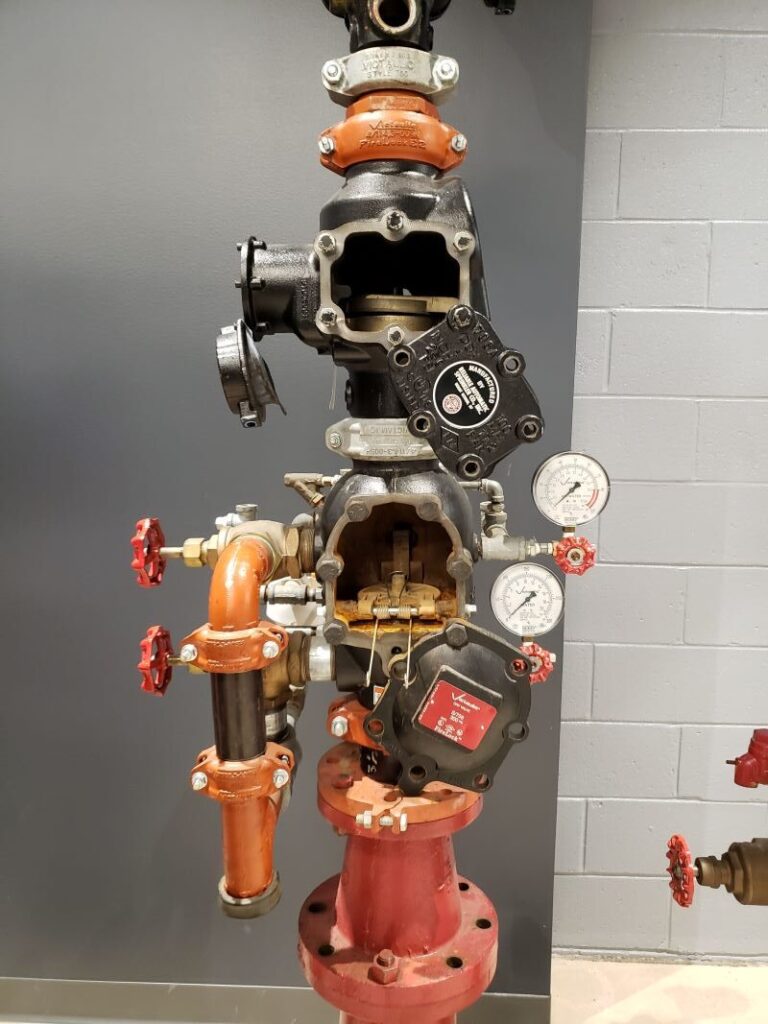Article by Peter Mannerherz – Inspections Specialist
Annual and Three-Year Dry Pipe Tests are not only required by NFPA 25, but vital to ensure the performance of your Fire Sprinkler system. These tests come in the form of Partial Flow Trip and Full Flow Trip tests.
So what are the distinctions between a partial flow trip test and a full flow trip test, and when and how often they are required?
Understanding what a dry pipe valve does makes it easier to grasp the significance of regular testing. Dry pipe valves contain water below a clapper and air (or nitrogen) above the clapper. When released, a sprinkler head opens and allows the dry pipe valve to fill the overhead pipes with water or nitrogen. To ensure proper functioning, these valves must be tested annually by partially tripping the valve and documenting the results each year. Additionally, a Full flow trip test, otherwise known as a 3 year, is required every 3 years on your Dry Sprinkler system or after a modification is made system.

Here is a breakdown of how the inspector conducts these tests:
PARTIAL FLOW TRIP TEST
- Throttle the sprinkler control valve to within 2.5 turns of being fully closed.
- Open the Inspectors test connection to release air pressure from the system.
- Record the time and air pressure at which the system trips.
- Compare the results with the previous tests and take appropriate corrective action if the trip time has increased.
FULL FLOW TRIP TEST
- Keep the sprinkler control valve open fully.
- Complete the main drain test.
- Record air pressure.
- Open inspectors test connection.
- Record the time to trip the valve and the air pressure at the trip point.
- Record the time for the water to arrive at the inspector’s test connection. Steady water flow should arrive within 60 seconds. If it doesn’t, a flushing investigation or a quick opening device may be required.
As mentioned earlier, a partial flow trip test only requires the inspector to partially close the test connection or 2.5 turns of being completely closed. The inspector records the time it takes for the system to trip or send an alarm.
On the other hand, a full flow trip test requires the inspector to document the time it takes to flood the Dry system by opening the test connection fully. Once the system is filled, the inspector records the time and then proceeds to drain down the Dry system after the test is complete. Depending on the size of the system, this step can take a significant amount of time.
Furthermore, it’s crucial to note that whenever there’s a modification to your sprinkler system, a full flow trip test must be completed. Otherwise, a full flow trip test will be required every 3 years thereafter.
Regularly reviewing your preventative maintenance agreement with your contracted life safety professional ensures these required tests are completed on schedule. To learn more about how Oliver Fire Protection & Security can manage testing and maintenance for your entire portfolio of properties, please call (610)277-1331 and ask to speak to our PMA representative or simply email us at: Sales@oliverfps.com

